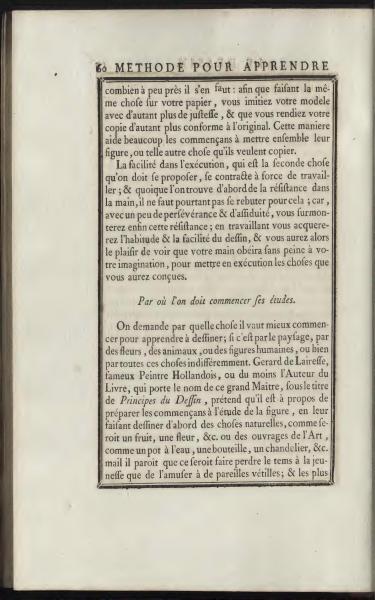Method for Learning
How much exactly is needed: so that by doing the same thing on your paper, you reproduce your model with greater accuracy, and make your copy as similar to the original as possible. This method greatly helps beginners in assembling their figure, or any other object they wish to replicate.
The ease of execution, which is the second goal one should aim for, is developed through practice; and although resistance in the hand is initially found, one should not be discouraged by this; for, with a little perseverance and diligence, you will eventually overcome this resistance; by working you will gain the habit and ease of drawing, and you will then have the pleasure of seeing your hand follow your imagination effortlessly, to execute the things you have conceived.
Where One Should Begin Their Studies.
It is asked with what one should begin to learn drawing; whether it's landscapes, flowers, animals, or human figures, or whether it's indifferent among these things. Gerard de Lairesse, a famous Dutch Painter, or at least the Author of the Book, which bears the name of this great Master, under the title Principles of Drawing, claims it is appropriate to prepare beginners in studying the figure, by first having them draw natural objects, such as a fruit, a flower, etc. or works of Art, like a water pot, a bottle, a candlestick, etc. but it seems this would waste time for the youth, amusing them with such trifles; and the most
Translation Notes
- "persévérance & d’assiduité": translated as perseverance and diligence.
The text discusses the importance of accurately replicating a model to aid beginners in art. It emphasizes developing ease of execution through practice and perseverance. The author suggests that beginners should start with drawing natural objects or simple artworks to lay a foundation for more complex studies.
